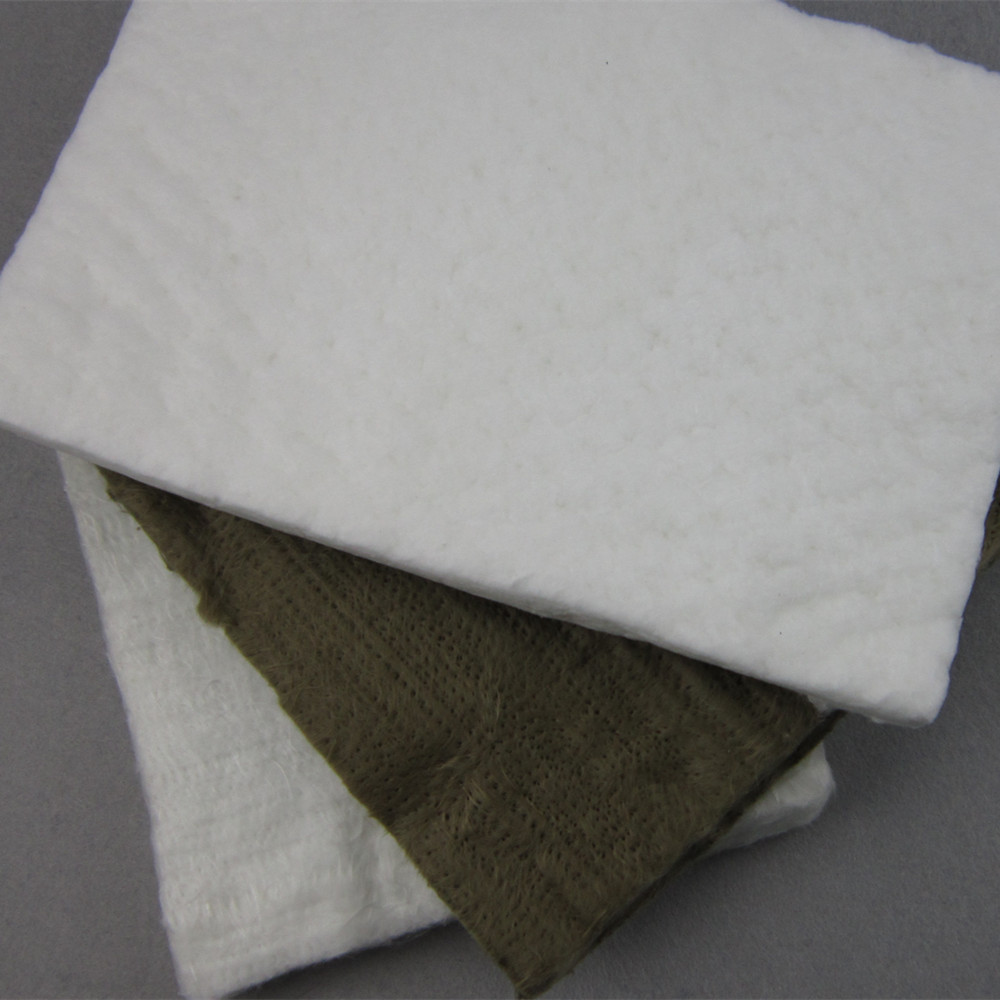Materialbasis : Reine amorphe Kieselsäurefasern (≥96 % SiO₂-Gehalt), verarbeitet zu einer dichten, nadeligen Struktur.
Thermische Leistung :
Dauereinsatz : 1000 °C (1832°F), mit kurzfristiger Toleranz bis zu 1260 °C (2300 °F).
Minimale lineare Schrumpfung (<2 %) bei 1000 °C, wodurch langfristige Dimensionsstabilität gewährleistet wird.
Hauptvorteile :
Chemisch inert: Beständig gegen Säuren, Laugen und Oxidation, auch bei extremer Hitze.
Ultra-niedrige Wärmeleitfähigkeit ( 0,035–0,045 W/m·K ) für hervorragende Wärmespeicherung.
Nicht brennbar (Brandschutzklasse A) und keine flüchtigen Emissionen.
Typische Anwendungsfälle :
Hochtemperatur-Auspuffkomponenten (Turbolader, Fächerkrümmer, Rennauspuffanlagen).
Kritische Wärmeabschirmung in der Luft- und Raumfahrt, in Gießereien und der Energieerzeugung.
Materialbasis : E-Glasfasern (Calcium-Aluminoborosilikatglas) zu einer flexiblen Matte verbunden.
Thermische Leistung :
Dauereinsatz : 450–550 °C (842–1022°F), wobei einige modifizierte Sorten eine kurze Exposition gegenüber 700°C (1292 °F).
Hauptvorteile :
Kosteneffizient: ~50–70 % günstiger als Lösungen auf Siliziumbasis.
Hervorragende Schallabsorption (NRC 0,65–0,85) zur Geräuschreduzierung in Abgassystemen.
Lässt sich leicht schneiden und an unregelmäßige Oberflächen anpassen (Dichte: 60–100 kg/m³).
Einschränkungen :
Allmähliche Faserversprödung über 500 °C, wodurch die Gefahr der Partikelfreisetzung besteht.
Mögliche Freisetzung von Formaldehyd in feuchten, sehr heißen Umgebungen (erfordert UL GREENGUARD-Zertifizierung).
| Parameter | Silica-Nadelmatte | Fiberglas-Nadelmatte |
|---|---|---|
| Spitzentemperatur | 1260 °C (2300 °F) | 700°C (1292°F) kurzzeitig |
| Wärmeleitfähigkeit | 0,035–0,045 W/m·K | 0,05–0,08 W/m·K |
| Chemische Beständigkeit | Außergewöhnlich (pH 1–14 stabil) | Mäßig (zersetzt sich in starken Säuren) |
| Akustische Dämpfung | Begrenzt (NRC 0,3–0,4) | Hoch (NRC 0,7–0,85) |
| Lebensdauer bei 600°C | 10+ Jahre | 2–5 Jahre |
Turbolader-/Diesel-Auspuffanlagen :
Verwenden Sie Silicamatten in der Nähe von Turbos/DPFs, wo die Gastemperatur 800 °C übersteigt.
Fiberglas eignet sich für Auspuffendrohre/Schalldämpfer (<500 °C).
Gewichtssensitive Designs :
Kieselsäure: Höhere Kosten, aber 30 % leichter als Alternativen aus Keramikfasern.
Fiberglas: Kostengünstig für nicht kritische Wärmezonen.
